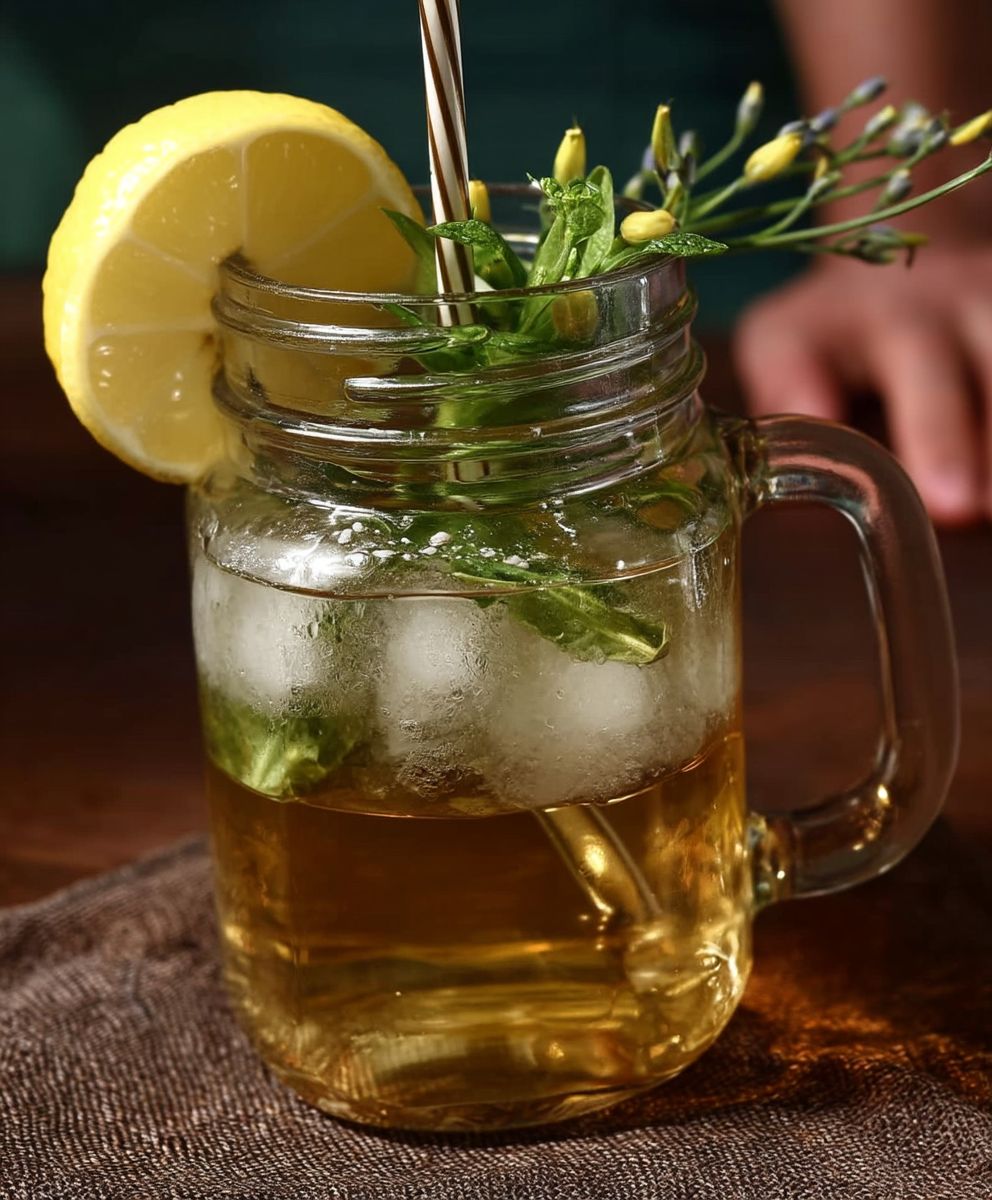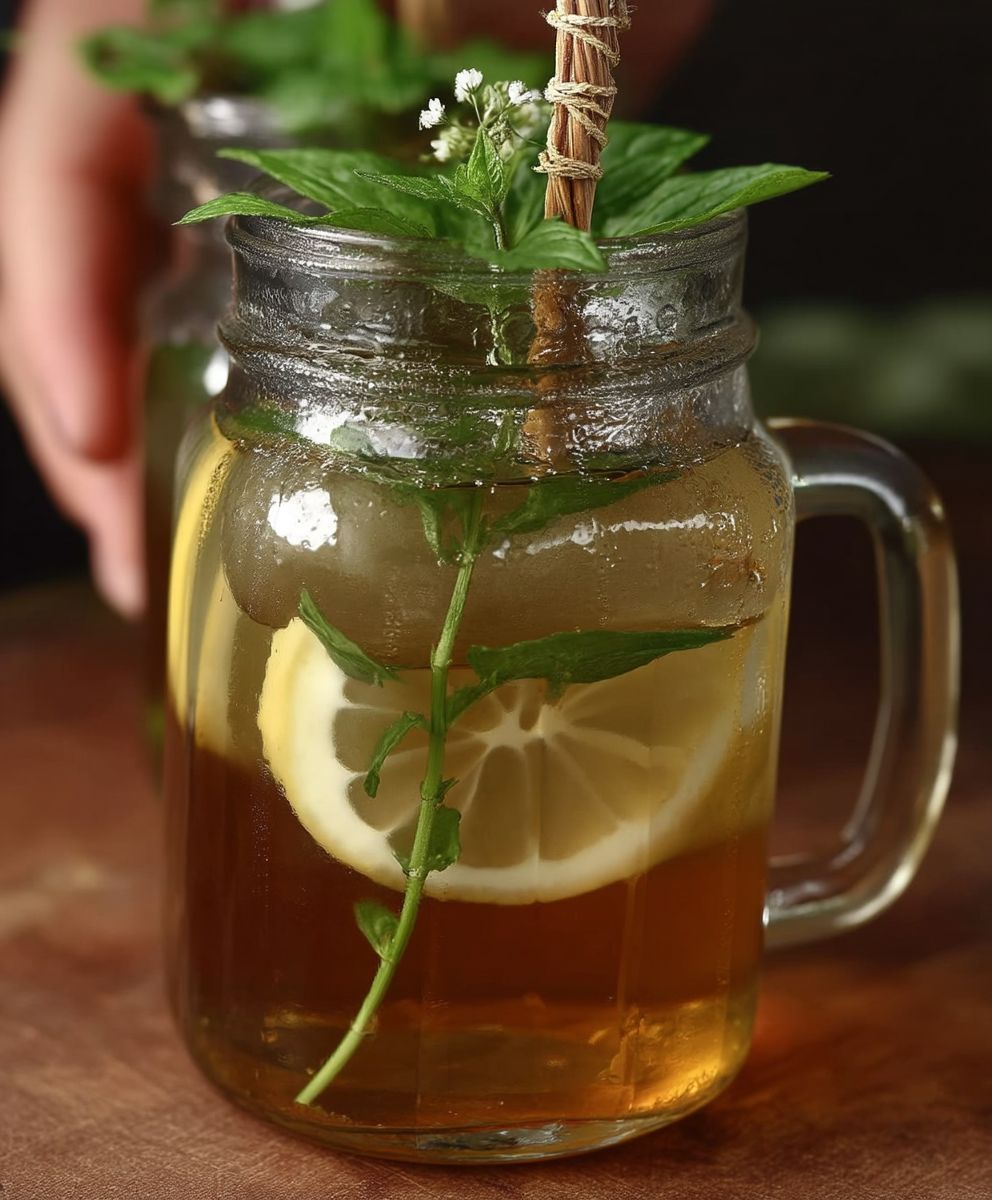Brew Tea like a seasoned pro with this comprehensive guide! Have you ever wondered why your homemade tea doesn’t quite match the comforting perfection of your favorite tea shop? The secret, my friends, lies in the details. More than just steeping a bag in hot water, brewing tea is an art form, a ritual practiced for centuries across diverse cultures.
From the delicate ceremonies of Japan to the robust traditions of England, tea has always been more than just a beverage; it’s a symbol of hospitality, relaxation, and connection. But let’s be honest, sometimes we just want a fantastic cup of tea without all the fuss. That’s where this guide comes in. We’ll break down the essential steps to consistently brew tea that’s bursting with flavor, aroma, and all the soothing qualities you crave.
People adore tea for its incredible versatility. Whether you’re seeking a calming chamomile before bed, an energizing black tea to kickstart your morning, or a refreshing iced tea on a hot summer day, there’s a tea for every mood and occasion. Plus, it’s incredibly convenient! With just a few simple ingredients and techniques, you can unlock a world of delicious possibilities. So, grab your kettle, your favorite mug, and let’s embark on a journey to tea-brewing mastery!
Ingredients:
- 8 ounces (225ml) of fresh, cold water
- 1 tea bag or 1 teaspoon (2-3 grams) of loose leaf tea (black, green, white, oolong, or herbal your choice!)
- Optional: Milk (dairy or non-dairy), sugar, honey, lemon, or other sweeteners/flavorings to taste
Preparing the Water: The Foundation of a Great Cup
The quality of your water significantly impacts the taste of your tea. Avoid using tap water that has a strong chlorine smell or taste. Filtered water is always a good choice. If you don’t have a filter, let the tap water sit for a few minutes to allow some of the chlorine to dissipate.
Important: Never re-boil water. Re-boiling removes dissolved oxygen, which can make your tea taste flat and lifeless. Always use fresh water for each cup.
Heating the Water: Temperature Matters!
The ideal water temperature varies depending on the type of tea you’re brewing. Using the correct temperature is crucial for extracting the best flavor and avoiding bitterness.
- For Black Tea: Bring the water to a full, rolling boil (212°F or 100°C). Black tea is robust and can handle the high heat.
- For Green Tea: Heat the water to around 175°F (80°C). Boiling water can scorch the delicate leaves of green tea, resulting in a bitter taste. If you don’t have a thermometer, bring the water to a boil and then let it sit for a few minutes to cool slightly.
- For White Tea: Similar to green tea, white tea prefers a lower temperature, around 170°F (77°C).
- For Oolong Tea: The ideal temperature for oolong tea varies depending on the type of oolong. Lighter oolongs prefer around 185°F (85°C), while darker oolongs can handle temperatures closer to boiling.
- For Herbal Tea: Most herbal teas can be brewed with boiling water (212°F or 100°C).
Tip: If you don’t have a thermometer, you can judge the temperature by observing the bubbles in the kettle. For green and white tea, look for small bubbles forming on the bottom of the kettle, resembling “fish eyes.” For oolong tea, look for slightly larger bubbles, resembling “crab eyes.” For black and herbal teas, wait for a full, rolling boil.
Steeping the Tea: The Art of Infusion
Steeping time is another critical factor that affects the flavor of your tea. Over-steeping can lead to a bitter taste, while under-steeping can result in a weak and flavorless brew.
- Pour the Hot Water: Pour the heated water over the tea bag or loose leaf tea in your cup or teapot. If using a teapot, make sure it’s preheated by rinsing it with hot water first. This helps maintain the water temperature during steeping.
- Steep According to Tea Type:
- Black Tea: Steep for 3-5 minutes. Start with 3 minutes and taste-test to see if you prefer a stronger brew.
- Green Tea: Steep for 2-3 minutes. Green tea can become bitter quickly, so don’t over-steep.
- White Tea: Steep for 2-4 minutes. White tea is delicate and requires a gentle steeping.
- Oolong Tea: Steep for 3-7 minutes, depending on the type of oolong. Experiment to find your preferred steeping time. Some oolongs can be re-steeped multiple times.
- Herbal Tea: Steep for 5-7 minutes. Herbal teas generally require a longer steeping time to fully release their flavors.
- Remove the Tea Bag or Strain the Loose Leaf Tea: Once the steeping time is complete, remove the tea bag or strain the loose leaf tea from the cup or teapot. Leaving the tea in the water will continue to steep it, leading to a bitter taste.
Tip: Use a timer to ensure accurate steeping times. A few seconds can make a difference in the final flavor of your tea.
Serving and Enjoying Your Tea: The Final Touches
Now that your tea is brewed, it’s time to customize it to your liking and enjoy!
- Add Milk (Optional): If you prefer milk in your tea, add it after the tea has steeped. The amount of milk is a matter of personal preference. Some people like just a splash, while others prefer a more milky tea. Dairy milk, almond milk, soy milk, oat milk, and other non-dairy alternatives all work well.
- Add Sweetener (Optional): If you like your tea sweet, add sugar, honey, agave nectar, or your preferred sweetener to taste. Stir well to dissolve the sweetener completely.
- Add Lemon (Optional): A squeeze of lemon juice can brighten the flavor of some teas, especially black tea.
- Enjoy! Take a moment to savor the aroma and flavor of your freshly brewed tea. Relax and enjoy the experience.
Loose Leaf Tea: A Deeper Dive
While tea bags are convenient, brewing with loose leaf tea offers a more nuanced and flavorful experience. Loose leaf tea allows the leaves to fully unfurl and release their aromas and flavors. Here’s a little more about brewing with loose leaf:
- Tea Infusers: Use a tea infuser, tea ball, or a teapot with a built-in infuser to contain the loose leaf tea while it steeps.
- Amount of Tea: Use approximately 1 teaspoon (2-3 grams) of loose leaf tea per 8 ounces (225ml) of water. Adjust the amount to your preference.
- Steeping Time: Follow the steeping guidelines for the specific type of tea.
- Re-Steeping: Many high-quality loose leaf teas can be re-steeped multiple times. Each steeping will release different flavors and aromas. Experiment to see how many times you can re-steep your tea.
Troubleshooting: Common Tea Brewing Problems
Even with the best intentions, sometimes things can go wrong. Here are some common tea brewing problems and how to fix them:
- Bitter Tea:
- Cause: Over-steeping, using water that is too hot, or using low-quality tea.
- Solution: Reduce the steeping time, use cooler water, or try a different brand of tea.
- Weak Tea:
- Cause: Under-steeping, using too little tea, or using water that is not hot enough.
- Solution: Increase the steeping time, use more tea, or use hotter water.
- Cloudy Tea:
- Cause: Minerals in the water, especially hard water.
- Solution: Use filtered water or let the tap water sit for a few minutes to allow some of the minerals to settle.
Experimenting with Flavors: Beyond the Basics
Once you’ve mastered the basics of brewing tea, you can start experimenting with different flavors and additions. Here are a few ideas:
- Spices: Add spices like cinnamon, cardamom, ginger, or cloves to your tea for a warm and aromatic flavor.
- Citrus: Add a slice of lemon, orange, or grapefruit to your tea for a refreshing and zesty flavor.
- Herbs: Add fresh herbs like mint, basil, or rosemary to your tea for a unique and flavorful twist.
- Flowers: Add edible flowers like rose petals or lavender to your tea for a delicate and floral aroma.
- Fruit: Add berries, peaches, or other fruits to your tea for a sweet and fruity flavor.
Remember: Brewing tea is a personal experience. Don’t be afraid to experiment and find what works best for you. The most important thing is to enjoy the process and the delicious cup of tea that you create!

Conclusion:
So, there you have it! Brewing the perfect cup of tea might seem simple, but mastering these nuances truly elevates the experience. This isn’t just about throwing a tea bag in hot water; it’s about unlocking the full potential of your chosen tea leaves and creating a moment of pure bliss. This method is a must-try because it guarantees a richer, smoother, and more flavorful cup every single time. Trust me, once you’ve tasted tea brewed this way, you’ll never go back!
But the fun doesn’t stop there! Think of this as your base recipe, your foundation for tea-infused adventures. Want to spice things up? Try adding a cinnamon stick or a few slices of fresh ginger to the water while it’s heating. For a refreshing iced tea, simply brew a stronger concentration, let it cool completely, and pour it over ice with a squeeze of lemon or lime.
Serving Suggestions and Variations:
* Classic Comfort: Serve your perfectly brewed tea in your favorite mug, perhaps alongside a warm scone with clotted cream and jam.
* Iced Tea Refreshment: As mentioned, brew a stronger batch, chill it, and serve over ice with lemon, mint, or even a splash of fruit juice.
* London Fog: Add a splash of vanilla syrup and steamed milk (or a non-dairy alternative) to your Earl Grey tea for a cozy and comforting treat.
* Spiced Chai: Incorporate chai spices like cardamom, cloves, and cinnamon into your brewing process for a warming and aromatic beverage.
* Herbal Infusions: Experiment with different herbal teas like chamomile, peppermint, or lavender, adjusting the steeping time to your preference.
Don’t be afraid to experiment with different types of tea as well! This method works beautifully with black teas, green teas, white teas, and oolong teas. Each type will have its own unique flavor profile, so have fun exploring the world of tea and discovering your favorites. Remember to adjust the water temperature and steeping time accordingly to avoid bitterness.
I truly believe that everyone deserves to experience the joy of a perfectly brewed cup of tea. It’s a simple pleasure that can bring so much comfort and relaxation to your day. This method for how to brew tea is designed to be accessible and easy to follow, regardless of your experience level.
So, what are you waiting for? Go ahead and give it a try! I’m confident that you’ll be amazed at the difference it makes. And most importantly, I’d love to hear about your experience! Share your photos, your variations, and your thoughts in the comments below. Let’s create a community of tea lovers who appreciate the art of brewing the perfect cup. Happy brewing! I can’t wait to hear all about your tea adventures. Let me know what your favorite tea is to brew!
Brew Tea: A Simple Guide to the Perfect Cup
Brew the perfect cup of tea with our guide to water temperature and steeping times for various tea types. Customize with milk, sweeteners, and more!
Ingredients
- 8 ounces (225ml) of fresh, cold water
- 1 tea bag or 1 teaspoon (2-3 grams) of loose leaf tea (black, green, white, oolong, or herbal your choice!)
- Optional: Milk (dairy or non-dairy), sugar, honey, lemon, or other sweeteners/flavorings to taste
Instructions
- Prepare the Water: Use filtered water for the best taste. Avoid re-boiling water.
- Heat the Water: Heat water to the appropriate temperature based on the tea type:
- Black Tea: 212°F (100°C) – Full rolling boil
- Green Tea: 175°F (80°C)
- White Tea: 170°F (77°C)
- Oolong Tea: 185°F (85°C) for lighter, closer to boiling for darker
- Herbal Tea: 212°F (100°C) – Full rolling boil
- Steep the Tea:
- Pour the heated water over the tea bag or loose leaf tea in your cup or preheated teapot.
- Steep according to tea type:
- Black Tea: 3-5 minutes
- Green Tea: 2-3 minutes
- White Tea: 2-4 minutes
- Oolong Tea: 3-7 minutes
- Herbal Tea: 5-7 minutes
- Remove the tea bag or strain the loose leaf tea.
- Serve and Enjoy:
- Add milk, sweetener, or lemon to taste (optional).
- Stir well and enjoy!
Notes
- Water Quality: Use filtered water for the best flavor. Avoid tap water with a strong chlorine taste.
- Temperature is Key: Different teas require different water temperatures to prevent bitterness or a weak brew.
- Steeping Time Matters: Over-steeping can cause bitterness, while under-steeping results in a weak flavor. Use a timer for accuracy.
- Loose Leaf Tea: For a more nuanced flavor, use loose leaf tea with a tea infuser. Many high-quality loose leaf teas can be re-steeped.
- Troubleshooting:
- Bitter Tea: Reduce steeping time, use cooler water, or try a different tea.
- Weak Tea: Increase steeping time, use more tea, or use hotter water.
- Cloudy Tea: Use filtered water.
- Experiment: Try adding spices, citrus, herbs, or flowers to customize your tea.

